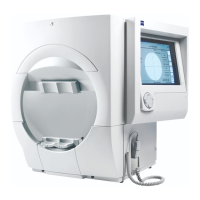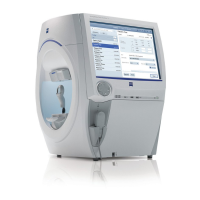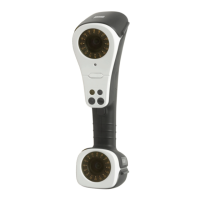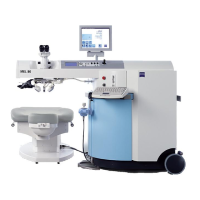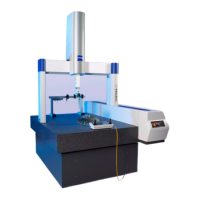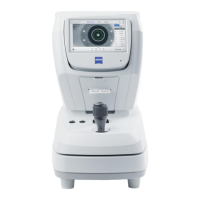Humphrey Field Analyzer II-
i
series User Manual 2660021145640 A
Test Reliability
6-3
Patient Fixation
Improper or erratic fixation may make test results meaning
less. The perimetrist can play an
important role by emphasizing fixation while explaining the test procedure.
Tips for improving patient fixation:
• Choose a fixation target that is appropriate for the patien
t. When you tell the patient to look at
the yellow fixation light, verify that they can see the light by asking, “Do you see the yellow
light? Is it clear?”. If the light is not clear, consider modifying the trial lens correction. If the
patient cannot see the light, for example, due to macular disease, change to the small or large
diamond to help the patient fixate throughout the test.
• Use the Demo test to make sure the patient understands the test and
is responding properly.
Re-instruct the patient as necessary, especially if he or she is inclined to look around for stimuli.
• Fixation is more difficult with a dry cornea. Encour
age the patient to blink normally whenever
they press the response button. Lack of blinking can cause part of the visual field to “white
out” for some patients.
• Inform your patient in advance that it is normal for the
background to seem to change or for
the fixation target to seem to move. Barring other problems, they should not let these
phenomena distract them. Encourage them to take breaks and pause the test by holding down
on the response button if fatigue is a problem.
• Observe the patient by means of the video eye monitor
. Encourage correct behavior.
• Record any observations that are relevant to r
eliability by entering your comments on the
patient data screen, or by writing your comments directly on the printout.
Trial Lenses
Using trial lenses incorrectly or using none when one is
needed is another source of unreliable test
results.
Things to remember ab
out trial lenses:
• Use a trial lens, when necessary. Use only the t
hin, wire-rimmed variety. Let the automatic
calculation program (see “Entering Trial Lens Data,” on page 3-11) determine the correct lens
power to use. Verify with the patient that the fixation light is not blurred.
• Use trial lenses only for central tests (within 30°),
or the central part of a full field test. Remove
trial lenses and lower the trial lens holder for peripheral tests (beyond 30°). You cannot start
the peripheral part of a full field test until the trial lens holder has been lowered.
• Place the sphere correction in the slot closest to the p
atient’s eye and the cylinder lens behind
the sphere. Adjust the trial lens holder so that the lenses are as close to the patient’s eye as
comfort will allow, without touching any lashes.
• Tell the patient that it is important to stay close to the trial lens and cen
tered behind it. Model
750
i
owners should use Head Tracking and Vertex Monitoring to help keep the trial lens
centered and set at the proper distance (see Chapter 5).
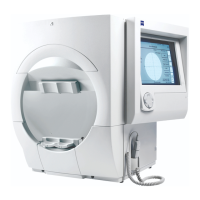
